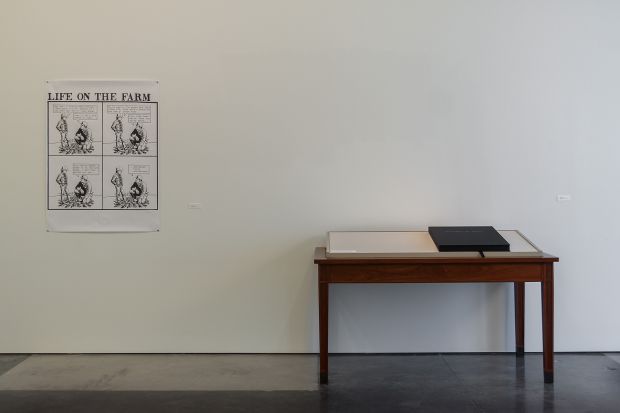

Santa Fe to Kansas City is more than a road trip. It’s a challenging 900 mile journey of arid plains, desert, mountains, rattlesnakes and violent thunderstorms. Crossing the southwestern region of North America and connecting St. Louis with New Mexico, the Santa Fe Trail was originally a trading route opened by the Spaniards at the end of the 18th century. The asphalt strand connecting the foothills of the Sangre de Cristo Mountains and the rich river basin of the heartland is windswept, often sparse, and filled with seemingly endless vistas that lend themselves to contemplation and reflection.
It was on that journey I began conceiving Mount. I was returning home from an engagement with Landfall Press in Santa Fe, where they had invited me to etch an edition of recent drawings. I had also decided to deal with another task, and pick up what remained of the work I had with a gallery that had recently closed, after thirty years. They were my sixth dealer in five years to depart the scene by choice, or death. Endings seem to take on a poignancy in the emptiness of the desert, with its blowing tumbleweeds. There was much to consider, as I packed my rented wagon, and set my course for home.
My inspiration was kindled on the trail between New Mexico and Missouri. Its changing landscape seems to overflow with shadows of timeless archetypes: violent protagonists, quiet cowboys, and lone rebels. I was filled with the notion of romanticized Americana— tattered state flags, kitsch religious scenes, wild horses, and Stetsons. The iconography of the West took on another life for me. I inhaled the fresh dust as we crossed the Black Mesa. I could taste the rain in the flattened sky.
Mount debuts at Haw Contemporary, a gallery space at the end of my trail located in the stockyards of Kansas City. The area has sustained buildings and businesses untouched by the passage of time. The Kemper Arena's livestock traditions and the Golden Ox Restaurant and Lounge are alive and well, successful public time capsules. Neighborhood roots go back to 1871 when the first independent stockyard was organized; farming and livestock facilities were erected in the Kansas City West Bottoms on the east bank of the Kaw River. Activity peaked in the 1940s when the animal husbandry and agricultural business grossed $350 million a year and over 1.8 million cattle clunked through the stockyards en route to their end.
My cross-country travels from Santa Fe to Kansas City done, I began to corral the works of art I wanted for Mount. I asked Landfall Press to allow me to debut Terry Allen's recent print. I contacted Greg Kucera in Seattle and requested one of Jack Daws' counterfeit, 18-karat gold copper-plated pennies and a cartoon mocking contemporary cowboy art. I thought of Adrianne Herman and her prints of lists, mundane detritus of hope and consumerism and gave her an old-fashioned phone call. Donna Huanca used her father's clothing to remake a historical photograph, a 9 x 12 foot portrait of her father with Che Guevara and his gang in the Bolivian jungles during their attempt to revolutionize Bolivia. Her detailed layers of vivid fabric paint a political landscape and tell the story of a daughter considering a parent’s life before she was born.
We ride our history, and we are saddled by our past. I arrived at this show as an artist navigating a fresh borderline. I asked Bill Haw to trust me help settle in his new frontier. I lassoed people I met at residencies, contacted a past dealer I deeply respect, and called upon Sarah Xeno, a jeweler who had collaborated with me on the West Eighteenth Street Fashion Show and created wearable gilded boxing gloves. John Woods, an 84-year-old retired aerospace engineer and incredible artist finally trusted me show his work. It took 11 years of us getting to know each other and the perfect show for me to ask him to let me include his 4 x 8 foot landscape of of MacArthur Park Lake. Drained by the city of Los Angeles in 1970, John Woods walked the floor of the lake collecting thousands of items embedded in the mud. He retrieved a century of cultural remnants lost, dropped or thrown into the water and preserved them in over eighty works of art. When John Woods said yes, I unhitched my horses and set up camp.
Peregrine Honig, 2013